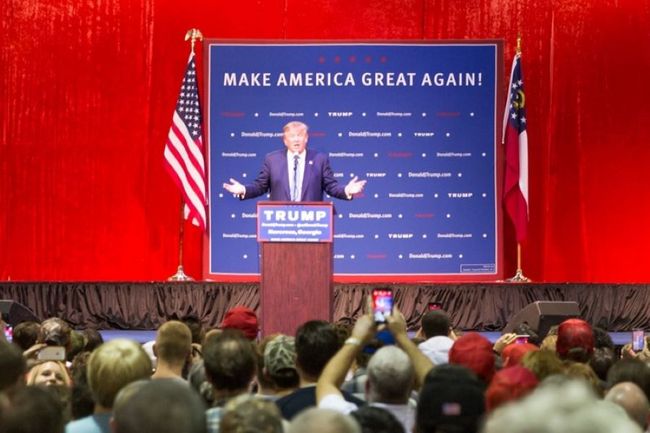✕

Column: industry Tag: trade tariffs, Published: 2024-12-27 10:48 Source: www.foodingredientsfirst.com Author: Sade Laja

President-elect Donald Trump’s pledge to place tariffs on foreign goods has long been a hot topic. With his impending inauguration in January, the F&B industry has been hastily building a picture of the effect potential levies imposed by the US could have on imports and subsequent industry profits and consumer prices.
Experts in the industry agree that Trump’s unpredictability makes market forecasts difficult and that international developments since his previous time in office mean tariffs would likely have different impacts this time around. In 2018, Trump imposed levies on steel, aluminum, washing machines and solar panels, accounting for over 4% of US imports.
Last week, Trump announced that BRICS countries (Brazil, Russia, India, China, South Africa) could “say goodbye to selling into the wonderful US economy” if they supported another currency to replace the dollar. The comment came a week after he warned Canada, Mexico and China that he would impose tariffs on them once he became president.
There is a lot at stake for US agri exporters. It remains one of the biggest destinations for the EU, with €27.2 billion (US$29 billion) landing on US shores last year, according to the European Commission. Popular categories include wine, beer, cheese, dairy, olives and chocolate.
Rabobank’s research department for food and agriculture believes a 10% to 20% universal tariff is a strong possibility, and even 60% for some Chinese imports.
The 10% tariff theory

Cyrille Filott, global strategist for consumer foods, packaging & logistics at RaboResearch Food & Agribusiness, tells Food Ingredients First that while predictions are difficult, there have been clues as to the direction Trump might take over the coming four years.
“In his campaign, 10% and 20% have been mentioned the most frequently. But I would expect that at certain points there will be negotiations [with other nations], and potentially countermeasures from countries that might be taxed,” he says.
“The high value-added products like premium hams or French wines could well be impacted. But the more commoditized a product is, the more likely you will see an effect when you get to unbranded items, for example.”
The knock-on effect could see rising costs causing margin pressure for companies, who will then start to favor US supplies in their product mix, cut costs and consolidate to remain competitive.
Previously, tariffs were set at 25% for steel, 10% for aluminum, and up to 50% for washing machines.
Trade war strategies
According to Filott, European food exporters have three primary strategies to mitigate the impact of proposed taxes. They could absorb the costs and maintain their current strategy. Alternatively, they could lower ambitions and exit the US, or lastly, establish production facilities in the US to circumvent tariffs. For some exporters, a combination of all three might be an option to ensure survival.
One thing is clear: when it comes to so-called “trade wars,” there are often no winners in the long run. According to Rabobank research, taxes imposed on China could lead to a decline in demand for US soybeans and corn, coupled with retaliatory tariffs, which pose a significant risk to US food and agriculture exports.
These tensions could boost Brazilian exports of soybeans, corn, beef and pork to China, while higher freight costs and US restrictions on ethanol may offset some gains. The impact of a 10% tariff on European exports to the US may raise prices in the EU, but Rabobank believes strategic adjustments will help manage the impact.
It is also expected that the UK wouldn’t be too heavily affected by taxes, with exports to the country at about £2.4 billion (US$3 billion) last year. Mark Lynch, partner at Oghma Partners, tells Food Ingredients First that it would be “painful” but “not catastrophic” for the UK industry.
“In terms of product areas, I don’t think they’ll [the US] do a blanket tariff. It’ll be on particular products. I would imagine categories such of whiskey, cheese, dairy and possibly salmon would be targeted if it were to happen,” says Lynch.
“Plus, the UK has bigger trade matters to worry about. The pressing issue is trade with the EU, which has taken a big hit recently.”
Countermeasures are the new normal
In a recent interview with Bloomberg, ING’s chief risk officer, Ljiljana Čortan, said that the impact of any tariffs probably wouldn’t be seen until the end of 2025 or 2026. She added that geopolitics and trade countermeasures were becoming the new normal, and it was a tactic countries and the industry would need to adapt to.
Ongoing escalating tensions between the EU and China showcase this view best, with the EU recently requesting consultations at the World Trade Organization (WTO) about China’s provisional anti-dumping measures on imports of EU brandy. The WTO has warned against countries taking “tit-for-tat” retaliatory measures, saying they harm economies.
Summing up the uncertainty ahead, a food industry consultant, Jane Milton, tells us that the scale of the economic impact on any country affected by US tariffs could hinge on the counter strategies deployed.
Previous:dsm-firmenich reveals “Milky Maple” as flavor of the year 2025, tapping indulgence and comfort
Next:UAE-based social services organization opens food packaging center in Abu Dhabi
Hot key words
Hot Products
Popular Vendors